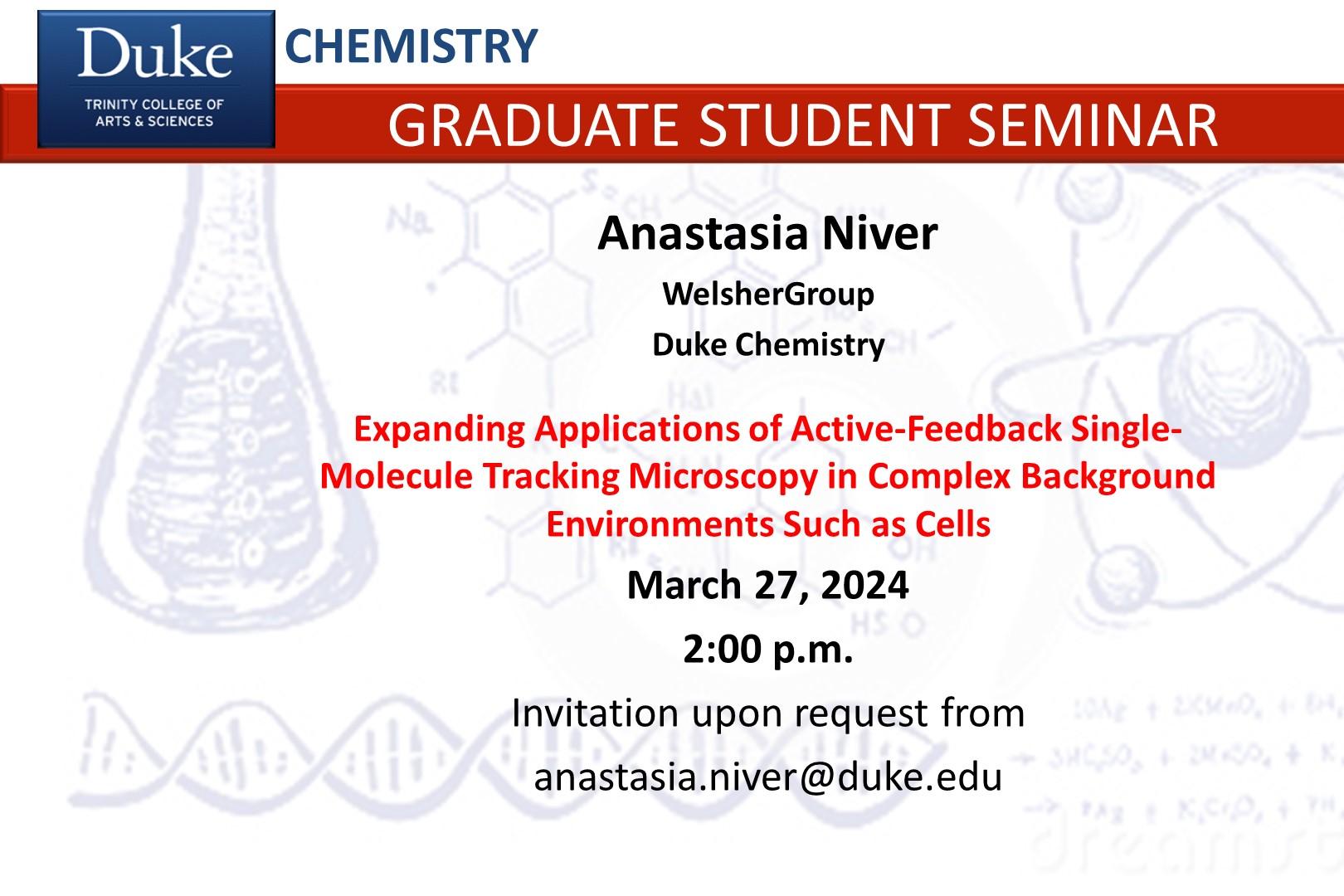Expanding Applications of Active-Feedback Single-Molecule Tracking Microscopy in Complex Background Environments Such as Cells

Anastasia Niver, Ph.D. Candidate
Kevin D. Welsher Ph.D., Advisor
Abstract: Active-feedback single-particle tracking methods are increasingly being applied to in vivo studies. Cellular heterogeneity is both a contributor to anomalous biomolecule behavior (when compared to behavior in dilute solutions) and an ongoing challenge to stable observation using active-feedback methods. Here we develop combined online Bayesian estimation with windowed estimation of background and signal (COBWEBS) in an effort to achieve active-feedback tracking in heterogeneous background environments. In 2D and 3D simulations, COBWEBS stabilizes tracking in complex environments with changing signal and background intensities. Additionally, COBWEBS (and alternative post-processing methods) are applied to experimental data to extract improved particle localizations. Once appropriately calibrated, COBWEBS, along the imaging XY plane, shows accuracy improvements when compared to the current experimentally implemented particle localization algorithm. Evidence suggests that real-time implementation of COBWEBS is possible, and a framework for future development of real-time estimation is presented. An alternative Gaussian fitting post-processing leads to higher accuracy improvements than the COBWEBS approach but cannot be implemented as a real-time particle localization strategy. Next, it is demonstrated that the increased response speed of a galvo scanning mirror in place of the traditional piezoelectric feedback increases overlap of trackable particle speeds with diffusive speeds of intracellular proteins. Finally, 3D active feedback tracking is used to read out static FRET efficiencies from freely-diffusing single molecules, suggesting potential for applications in probing protein dynamics using FRET as a molecular ruler.






